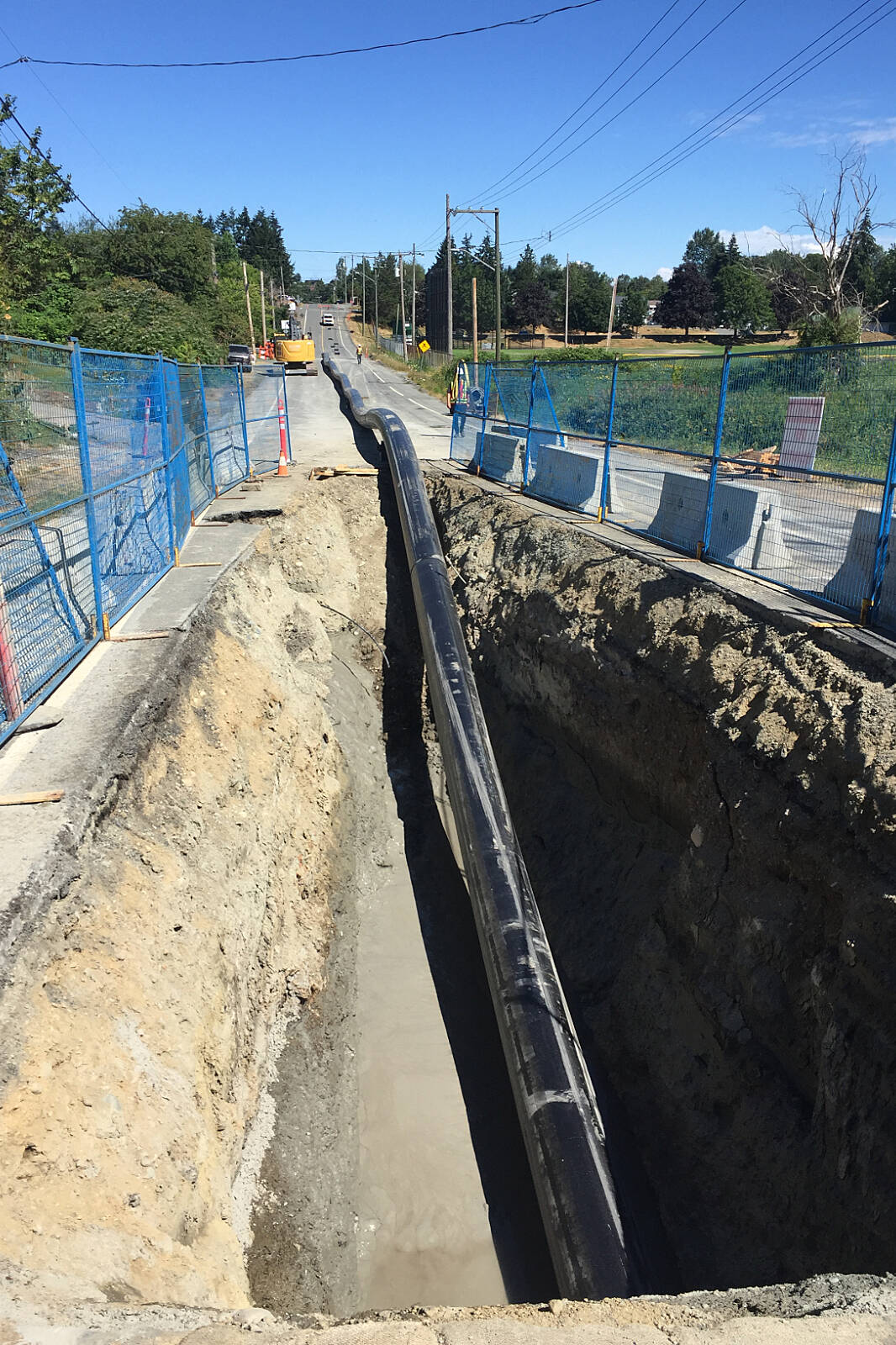Engineers in Nanaimo took a sideways glance, so to speak, at installing a new sewer line in the city’s Harewood neighbourhood last week.
The Park Avenue sanitary sewer upgrade project involved the replacement of a trunk sanitary sewer main using a technique called horizontal directional drilling.
The existing sewer, built in 1967, follows the Cat Stream south of Robbins Park and is approaching its sewage carrying capacity, but installing a new larger sewer main in the existing alignment was considered environmentally risky as the work would require removing trees for construction access, amphibian and fish salvage, bypassing of sewage and creek flow and other issues.
Using horizontal drilling to install a new 500 millimetre high-density polyethylene sewer pipe along Park Avenue meant drilling a 340-metre-long underground bore, with the deepest section being 13 metres underground, below the highest ground elevation at Sixth Street.
The new sewer pipe was “pulled back” Friday, Aug. 5, and will be connected at each end using traditional construction methods.
“As with any subterranean construction, there is always a risk of poor ground conditions such as soft soils or changes in strata, however, an extensive geotechnical study was completed at the concept design stage to ensure the methodology would be viable,” said Chris Lang, project engineer with Nanaimo’s engineering and public works division, in an e-mail.
“From an environmental aspect, it is worth noting that [horizontal drilling] and other micro-tunnelling processes have less of a carbon footprint than traditional open-cut construction when considering the energy inputs required.”
Maintaining the drill head position was a challenge for crews, Lang said. The sewer line being installed relies on gravity to keep sewage moving under Park Avenue, which means the bore hole descends at a very shallow angle. Lang said it was a meticulous task to keep the drill oriented correctly along its path and grade, but he said guidance systems are continually improving and the current technology has improved drastically over what it was even a few years ago.
“I would say 10, 15 years ago, proposing to do this installation, as designed, would be a very risky project for a horizontal driller,” he said. “However, now with the guidance systems and the accuracy we’re getting better at spacially drilling these underground pipes.”
The city used the same process in 2020 to bore a 285-metre hole for a 250mm pipe under the Nanaimo Parkway.
The cost of Park Avenue project is $1.37 million and is on schedule to be completed in September. Lang said it costs about 10 per cent more to use horizontal directional drilling versus digging an open slit trench, but the additional costs of cutting down and replacing trees and other environmental, soil and vegetation remediation would have far exceed the cost of the horizontal drilling and it would have taken several weeks longer to complete the project.
“Just to drill that pipe and pull it back took about six weeks, whereas, if we were doing the open cut through the Cat Stream it would be, two, three months,” Lang said.
The drilling work is being completed by Directional Mining and Drilling, a subcontractor to Milestone Equipment Contracting, which was awarded the sewer upgrade contract.
photos@nanaimobulletin.com
Like us on Facebook and follow us on Twitter
